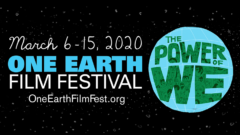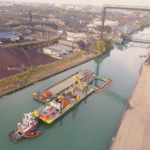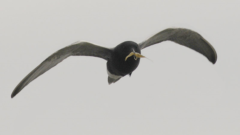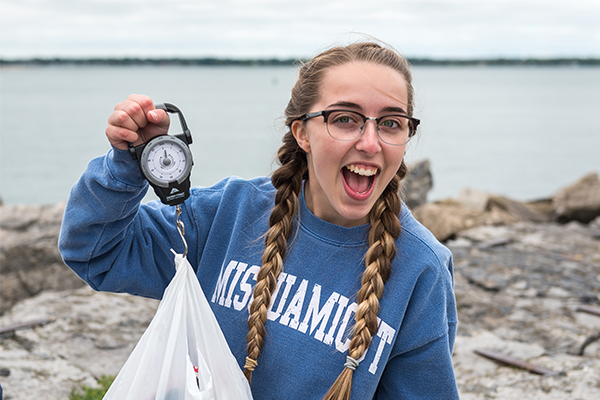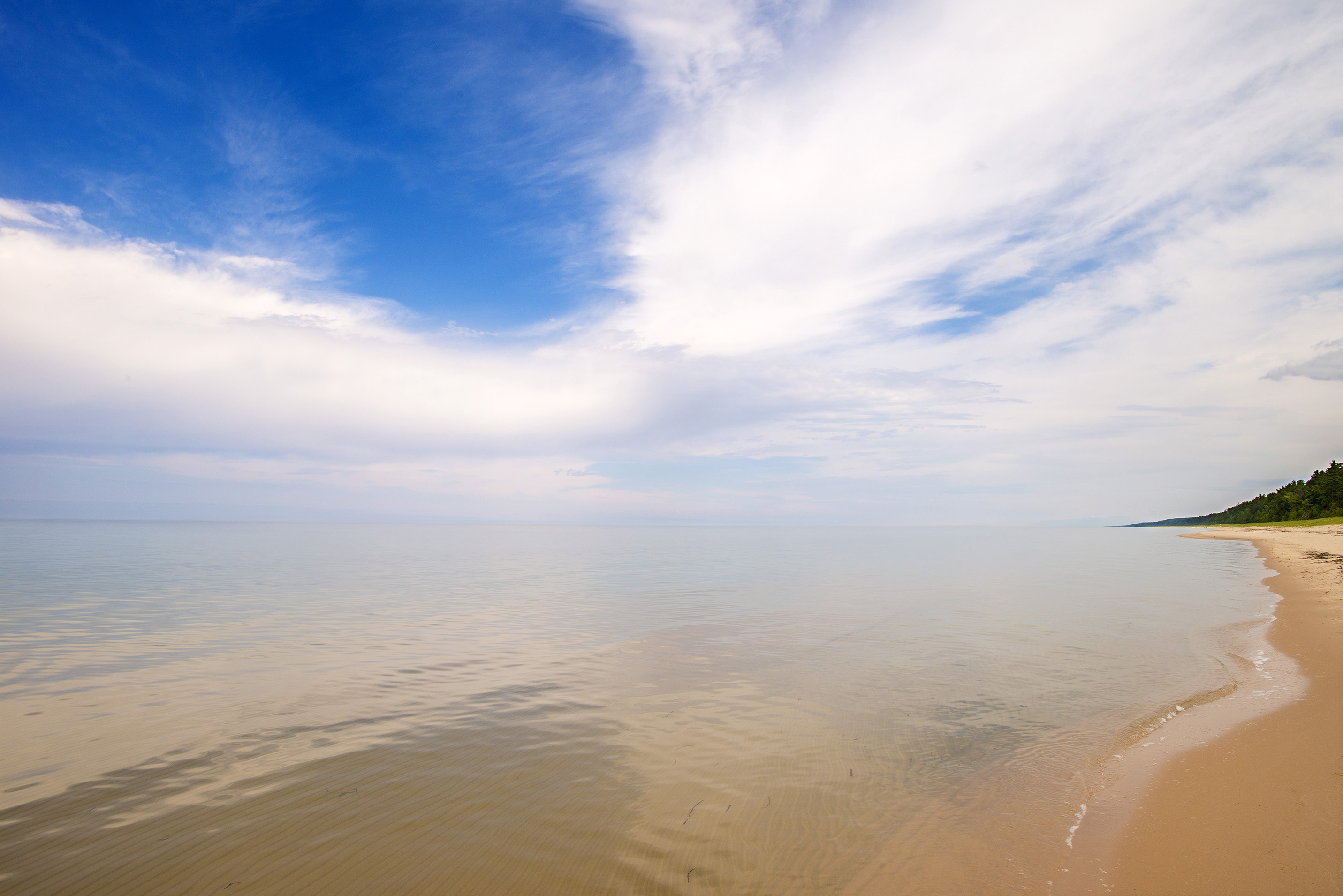Two falconry enthusiasts sentenced for bartering wild northern goshawk
Fish and Wildlife Service News
Fish and Wildlife Service News
http://www.fws.gov/news/ShowNews.cfm?ref=two-falconry-enthusiasts-sentenced-for-bartering-wild-northern-goshawk-&_ID=36585
Scooping poop improves water quality
Great Lakes Echo
http://feedproxy.google.com/~r/GreatLakesEcho/~3/7RItYN4o6Zc/
Eight years of Great Lakes underwater glider data now available to the public
NOAA Great Lakes Environmental Research Laboratory
NOAA Great Lakes Environmental Research Laboratory
https://noaaglerl.blog/2020/03/04/eight-years-of-great-lakes-underwater-glider-data-now-available-to-the-public/
Invasive plant program expands statewide
Great Lakes Echo
http://feedproxy.google.com/~r/GreatLakesEcho/~3/wQY_HQs0Nkg/
The importance of cultivating manoomin in the St. Louis River
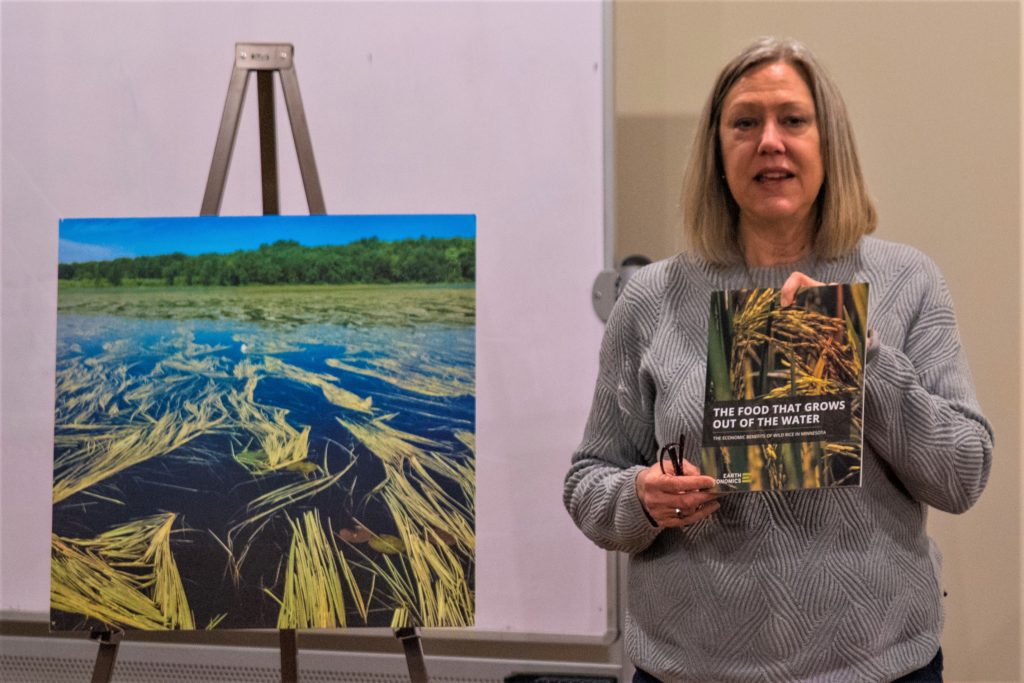
Nancy Schuldt holds a copy of the health impact assessment document the Fond du Lac Tribe commissioned. Image by Michael Anderson.
By Elise Ertl, University of Wisconsin-Superior
Nancy Schuldt delivered her River Talk, “Promoting Tribal Health by Protecting and Restoring Manoomin (Wild Rice) in the St. Louis River and Beyond,” on Feb. 12, stressing the importance of manoomin’s presence in the St. Louis River and the benefits it creates in health, wellness and wealth.
Schuldt, the water protection coordinator with the Fond du Lac Band of Lake Superior Chippewa, began by noting how the tribe approached the manoomin decline. “Science simply just isn’t enough. You need policy and reform, and to start that, we decided it was best to conduct a health impact assessment.”
Manoomin provides many health benefits physically, economically and socially. Wild rice is packed with fiber and protein, measuring much higher than white and brown rice. The harvesting of wild rice, an important tradition in Native American culture, also provides a great deal of physical exercise that adds to the health benefits of wild rice. Schuldt said that economically, the manoomin harvest adds more than $20 million to the state economy each year and supports nearly 300 jobs. The growth of wild rice also promotes increased duck populations, which in turn promotes duck hunting for economic profit.
After focusing on the benefits that wild rice supports, Schuldt described what wild rice needs to grow properly and abundantly. She used a quote that was shared by a concerned tribal member, which read, “Water is necessary for not just wild rice but us as well. It has to be clean.”
Good water quality and habitat are vital to the survival of this annual grass. Sulfate is one component being investigated because of its observed effects on wild rice. Schuldt said they are pushing for enforcing the state’s existing 10-ppm maximum of sulfate in the water, which the Band also has in its approved water quality standards. However, this can be a tough goal to achieve due to cost factors that arise for companies and wastewater treatment plants in treating their effluent. A lot of emphasis has been put on costs for the companies, but Schuldt believes the benefits of wild rice outweigh the costs.
A member of the audience asked why the water body sulfate specific standards were so important when cultivating wild rice. Schuldt delved deeper into the subject by explaining how sulfate turns into sulfide in the sediments surrounding the roots of the wild rice, which, over time, becomes toxic. The seeds then become less abundant and smaller, meaning less rice grows as the sulfide accumulates.
The next River Talk will be held at 6:30 p.m. on March 3 in conjunction with the St. Louis River Summit at the Duluth Entertainment and Convention Center. The topic will be “Akinomaage: Teaching from the Earth,” presented by photographer and Fond du Lac tribal member Vern Northrup. He will discuss how he uses photography as a tool to educate both himself and viewers about the rhythms of nature, the preservation of tradition, and the relationship between resilience and sustainability.
Blog – Wisconsin Sea Grant
https://www.seagrant.wisc.edu/blog/the-importance-of-cultivating-manoomin-in-the-st-louis-river/
Who’s in charge: Lack of storage facility oversight puts waterways at risk
The mission to recover the rusty patched bumblebee
Great Lakes Echo
http://feedproxy.google.com/~r/GreatLakesEcho/~3/r9LwrP3OWSg/
Environmental groups sue to speed up lake sturgeon status
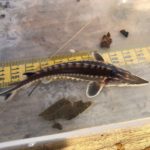
CHICAGO (AP) — Environmental groups in Illinois and Indiana have filed a federal complaint in hopes of forcing the U.S. Fish and Wildlife Service to complete a review that could designate lake sturgeon as a federally endangered species.
Lake sturgeon are a prehistoric fish that were once plentiful in the Great Lakes but have been reduced to extremely low levels by pollution, overfishing and habitat destruction.
Great Lakes Now
https://www.greatlakesnow.org/2020/03/ap-environmental-groups-sue-lake-sturgeon-status/
Financial Review & Donor List
2019 Treasurer’s Report
The Alliance for the Great Lakes had a great year, thanks to our donors, advocates, and champions. Without their support, we would not have been able to achieve clean water victories at local, state and federal levels.
Last year the Alliance invested in strengthening our internal finance and operations capacity, hiring a full-time director experienced in managing complex organizations and funding sources. Our Finance & Operations Director spent the past year making more resources available for our Great Lakes programs by improving operations through new management tools and enhanced reporting to inform our leadership’s and Board’s guidance of the Alliance’s strategy. The result is superior fiscal management and stewardship of donations, as evidenced by us receiving Charity Navigator’s four-star rating—the highest possible rating—for the ninth year in a row.
We are honored that so many individuals have entrusted us to carry out the critical work of protecting clean water, and we take that commitment seriously every single day.
I would like to recognize my fellow members of the 2019 Finance Committee for their continued dedication—Sue Conatser, Laura Rubin, and David Schmahl. I would also like to thank Joel Brammeier, president and CEO, and Kelly Farley, our Finance & Operations Director, for their dedication and guidance. We remain committed to effectively managing the Alliance’s finances, and using the organization’s resources to continue leading on Great Lakes protection and restoration for generations to come.
Frank Washelesky
Treasurer
Every Dollar Matters
Our supporters make it possible for the Alliance for the Great Lakes to lead on clean water protection at the local, state, and regional level. We would like to extend our sincerest thanks to all the donors who supported our work in our 2018 fiscal year (September 1, 2018 – August 31, 2019). In our 2019 financial report, we list donors who have contributed $1,000 or more, but every gift is appreciated and makes a difference in protecting the Great Lakes. Please find our donor list along with our complete 2019 financial report linked here.

The post Financial Review & Donor List appeared first on Alliance for the Great Lakes.
News – Alliance for the Great Lakes
News – Alliance for the Great Lakes
https://greatlakes.org/2020/03/financial-review-donor-list-2019/
Experts host additional panels about Great Lakes water levels and their impact
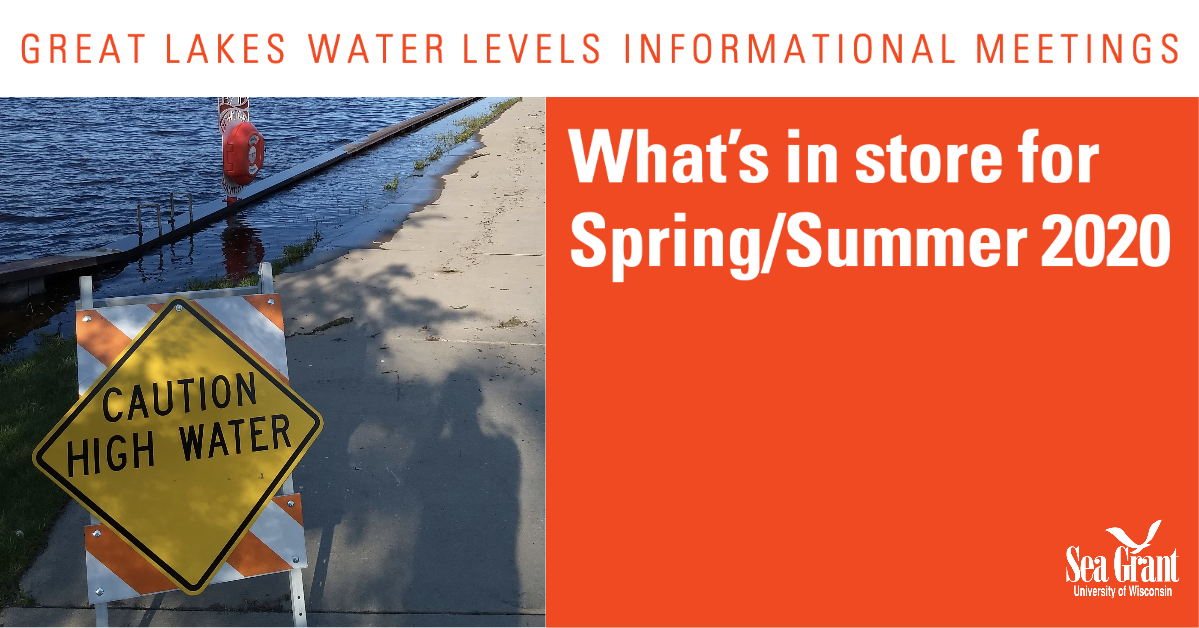 Great Lakes water levels have been at or near record highs in recent months, prompting concern among many Wisconsin residents.
Great Lakes water levels have been at or near record highs in recent months, prompting concern among many Wisconsin residents.
Those interested in learning what’s in store for Great Lakes water levels through spring and summer 2020 are invited to attend one of three upcoming informational meetings in communities along Lake Michigan.
At each session, attendees will hear from experts from Wisconsin Sea Grant, the U.S. Army Corps of Engineers, the National Weather Service and the Wisconsin Department of Natural Resources. There will also be time for attendees to ask questions. Seating at all sessions is available on a first-come, first-served basis.
The three sessions are:
Manitowoc: Tuesday, March 17, 6 to 8 p.m.
UW-Green Bay, Manitowoc Campus
University Theater
705 Viebahn St.
Manitowoc, WI 54420
Somers/Kenosha: Wednesday, March 18, 6 to 8 p.m.
UW-Parkside
Student Center Cinema
900 Wood Rd.
Somers, WI 53133
Mequon: Thursday, March 19, 6 to 8 p.m.
MATC Mequon Campus
Lecture Hall, Room A289
5555 W. Highland Rd.
Mequon, WI 53092
Dr. Adam Bechle, a coastal engineering outreach specialist with Wisconsin Sea Grant, will speak at all three panels. Said Bechle, “We have worked with federal, state and local partners to host a couple of these meetings in the past few months, and they have been quite well attended. With Great Lakes water levels already breaking records this year, demand for information continues to grow. These meetings will help folks understand the current water level situation, as well as possible steps forward to address the impacts of these high water levels.”
Those who are unable to attend the events in person may attend virtually through Zoom.
Additionally, a recording will be posted on Wisconsin Sea Grant’s YouTube channel after the events.
View or print an event flyer here.
View or print a list of resources for Great Lakes property owners here.
Questions about the events may be directed to Bechle at (608) 263-5133.
News Releases – Wisconsin Sea Grant
News Releases – Wisconsin Sea Grant
https://www.seagrant.wisc.edu/news/experts-host-additional-panels-about-great-lakes-water-levels-and-their-impact/
Great Lakes Moment: Decline of bird species should serve as a warning
Michigan lawmakers weigh renewable energy expansion
Great Lakes Echo
http://feedproxy.google.com/~r/GreatLakesEcho/~3/rOc__FEYNnE/
Warm winter changes — but can’t stop — outdoor fun
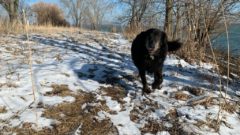
This article was republished here with permission from Great Lakes Echo.
By Danielle James, Capital News Service
From ski slopes to dog sled races to snow carving contests, warmer weather this season has forced Michigan’s winter sports and tourism groups to adapt to keep participants and spectators coming.
Great Lakes Now
https://www.greatlakesnow.org/2020/02/warm-winter-changes-outdoor-recreation/
Our New Library Display: Kids Take Action!
Wisconsin Water Library
https://waterlibrary.aqua.wisc.edu/our-new-library-display-kids-take-action/
Predicting the Future of Arctic Ice
NCEI News Feed
http://www.ncei.noaa.gov/news/arctic-ice-study
Snowed in: Upstate NY area could see 4 feet through weekend
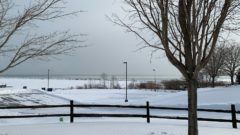
WATERTOWN, N.Y. (AP) — More than 2 feet of snow has fallen on upstate New York’s largely rural Tug Hill Plateau and another 2 feet is possible through the weekend.
Gov. Andrew Cuomo on Friday said he was dispatching 15 additional snow plows to region east of Lake Ontario.
Great Lakes Now
https://www.greatlakesnow.org/2020/02/ap-snow-lake-ontario-new-york-4-feet-weekend/
Michigan oversight panel OKs limits on ‘forever chemicals’
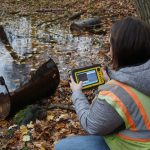
By John Flesher, AP Environmental Writer
TRAVERSE CITY, Mich. (AP) — A Michigan oversight panel Thursday endorsed drinking water standards designed to limit exposure to a group of household and industrial chemicals linked to a variety of health problems.
The proposed rules would apply to seven compounds in a category known as perfluoroalkyl and polyfluoroalkyl substances, or PFAS.
Great Lakes Now
https://www.greatlakesnow.org/2020/02/ap-michigan-oversight-panel-pfas-limits/
Draft conservation plan for Timber Road wind farms available for public comment
Fish and Wildlife Service News
Fish and Wildlife Service News
http://www.fws.gov/news/ShowNews.cfm?ref=draft-conservation-plan-for-timber-road-wind-farms-available-for-public-&_ID=36586
Isle Royale trail guide gets digital makeover
Great Lakes Echo
http://feedproxy.google.com/~r/GreatLakesEcho/~3/-2DMKWNLeho/
Levels of radium rising in Wisconsin groundwater
Feb. 27, 2020
By Marie Zhuikov
Several graduate students at the University of Wisconsin-Madison were part of a research team that found levels of radium in groundwater from public water supply wells in much of Wisconsin have risen over the past 18 years.
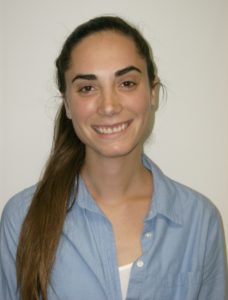
Madeleine Mathews, Amy Plechacek and Marie Dematatis conducted their study on this natural contaminant under the guidance of Matthew Ginder-Vogel, associate professor in the Civil and Environmental Engineering Department at UW-Madison, by putting a new spin on groundwater data collected by the Wisconsin Department of Natural Resources (DNR).
Their findings were published Feb. 20 in “AWWA Water Science,” a journal of the American Water Works Association. (“Spatial and temporal variability of radium in the Wisconsin Cambrian-Ordovician aquifer system.”)
According to the National Academy of Sciences, radium is of concern because long-term exposure to elevated levels of this contaminant in drinking water may result in an increased risk of bone cancer.
Radium occurs naturally in some Wisconsin groundwater. As the water moves through the underground aquifer system, minerals and other elements, including radium, dissolve out of the rock and into the groundwater. Some rocks transfer radium more effectively than others into groundwater.
In Wisconsin, the highest radium levels occur in water from two types of rock aquifers: the deep sandstone in Wisconsin’s eastern quarter and the crystalline granite found in the north-central part of the state. Water softeners can lower radium levels in drinking water, as can diluting it with water containing lower radium concentrations.
The students took information from a long-term, publicly available dataset by the DNR and examined the numbers from the year 2000 through 2018 for trends in radium levels, focusing on the most-problematic deep sandstone aquifer.
Mathews explained what conditions result in elevated radium in groundwater. “In the very eastern part of Wisconsin, there’s a thick shale layer that acts as a regional confining unit, separating the deep Cambrian-Ordovician bedrock below from the shallow Silurian bedrock above. In the rest of the state, you don’t have this really thick shale layer, so we call it regionally unconfined.”
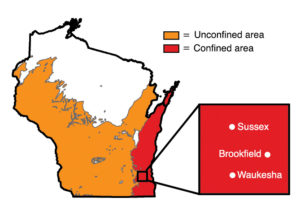 Previous studies have shown that elevated radium occurs in groundwater that is old, has elevated dissolved solids or is anoxic. Mathews said all those conditions are found below the regional confining unit in eastern Wisconsin.
Previous studies have shown that elevated radium occurs in groundwater that is old, has elevated dissolved solids or is anoxic. Mathews said all those conditions are found below the regional confining unit in eastern Wisconsin.
“We found that, overall, the radium levels are increasing more in the confined region in the eastern part of the state,” said Plechacek. “However, we still see increases in radium from 2000 to 2018 in the rest of the state, regardless of if there is a confining unit or not.”
The average radium level in the confined region increased from 5.5 to 7.9 picocuries per liter (pCi/L) over this time period, and the level in the unconfined region increased from 4.8 to 6.6 pCi/L. The maximum contaminant level set by the U.S. Environmental Protection Agency for drinking water is 5 pCi/L.
Mathews said they aren’t sure why the increase is happening. “We have all this data but it doesn’t give much of an explanation,” she said. “It’s just kind of the tip of the iceberg, so we’d like to use this dataset to explore that in another study.”
The team also looked closely at radium trends over time in public wells from three communities: Sussex, Brookfield and Waukesha. Although these cities in eastern Wisconsin are near each other, the researchers found variable trends.
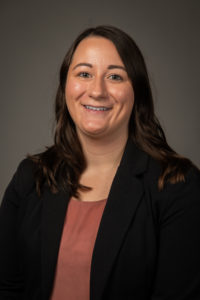
“For Sussex and Brookfield, radium levels appear to increase over the study period,” said Plechacek. “For Waukesha there is an overall decrease in radium, although levels in most of their wells remain above the maximum contaminant level for safe drinking water.”
Waukesha sought a new drinking water source mainly because of elevated radium, and is in the process of switching from groundwater to water pumped from Lake Michigan. Construction of the new system could begin this year. The switch required permission from the governors of the other Great Lakes states and provinces, causing much controversy and discussion when it was brought up in 2016.
Mathews said their research project was the result of collaboration between many different groups at the university and also state agencies. She said their methods are applicable to similar datasets in other states. “There are other groups doing similar things across the country. These long-term water quality monitoring datasets are definitely a powerful tool. You can filter through them and get useful information out of them.”
Funding for this project was provided by the Wisconsin Groundwater Research and Monitoring Program and the Wisconsin DNR. The University of Wisconsin Water Resources Institute is part of the groundwater research and monitoring program.
News Release – WRI
https://www.wri.wisc.edu/news/levels-of-radium-rising-in-wisconsin-groundwater/
Invasive mussels clear the water and coat the wrecks at Thunder Bay National Marine Sanctuary
Great Lakes Echo
http://feedproxy.google.com/~r/GreatLakesEcho/~3/0poMAYcy5qI/
Appleton Lock 4 repairs start
 Construction is underway rebuild a section of the canal wall that abuts the Kaukauna Utilities hydroelectric plant on the eastern side of the lock. Over the years, the force of the water in the canal and the effects of winter weather and heavy rains eroded the canal wall structure creating a small sink hole. In fall of 2019, a 30-foot section of the wall slid into the channel.
Construction is underway rebuild a section of the canal wall that abuts the Kaukauna Utilities hydroelectric plant on the eastern side of the lock. Over the years, the force of the water in the canal and the effects of winter weather and heavy rains eroded the canal wall structure creating a small sink hole. In fall of 2019, a 30-foot section of the wall slid into the channel. Construction crews from McMullen & Pitz will install a cofferdam—a structure that allows water to be pumped out to create a dry area in the channel for construction. Crews will dig to the bedrock or hard pack in the channel, pour a new cement foundation for the wall, and use new and original cut stone to rebuild the wall. A portion of the slope behind the canal wall will be covered with stone rip rap to further stabilize the site.
Construction crews from McMullen & Pitz will install a cofferdam—a structure that allows water to be pumped out to create a dry area in the channel for construction. Crews will dig to the bedrock or hard pack in the channel, pour a new cement foundation for the wall, and use new and original cut stone to rebuild the wall. A portion of the slope behind the canal wall will be covered with stone rip rap to further stabilize the site.Blog – Fox Locks
http://foxlocks.org/2020/02/27/appleton-lock-4-repairs-start/
Connecting for Clean Water on Chicago’s Southeast Side
Chicago’s Southeast Side is where the Calumet River meets Lake Michigan. The neighborhood is rich in water resources: Lake Michigan, Lake Calumet, Big Marsh Nature Preserve, and the river that courses through the community.
But the Calumet River is heavily industrialized. Its shoreline is dominated by industry, leaving little access for people to enjoy the water. The steel mills that once operated here left a legacy of industrial pollution. And for the past decade, community activists have been fighting to prevent new pollution sources and clean up existing sources that threaten public health.
The Alliance for the Great Lakes believes that everyone should have access to clean water and recreation opportunities. That’s why we’re facilitating and funding Calumet Connect, a coalition of local and community organizations that’s working for change along the river.

Bringing People Together
“The Southeast Side has so many dedicated folks that have been working to improve the community,” says Olga Bautista, a longtime community resident and the Alliance’s Community Planning Manager – Southeast Chicago. “It’s exciting to bring them together to make things happen around water.”
Environmental activists have won a series of victories like stopping a coal gasification plant from being built along the river, reducing levels of airborne manganese, and halting storage of open petroleum coke piles along the river’s shore. Meanwhile, service organizations have focused on affordable housing, public health, economic development, and other important issues.
“But most of them have been working independently of each other,” says Bautista. “Calumet Connect is bringing them together.”
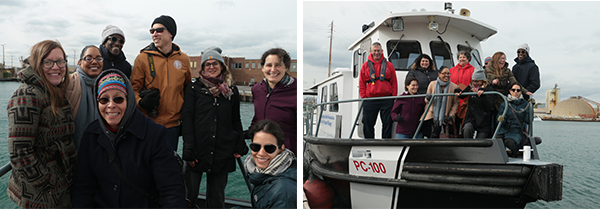
Ideas at the Heart of Change
Last year Calumet Connect formed an advisory council. The group identified three principles to guide its work: racial equity, community benefit, and challenge/growth.
Racial equity is the acknowledgement that marginalized groups bear the brunt of poor land use regulations, which makes them more susceptible to environmental pollution and climate impacts. Southeast Side neighborhoods like South Chicago and South Deering suffer higher asthma rates and lower life expectancies than the city overall.
Community benefit is un-siloing the great work community groups are doing and tapping into their “collective genius” to meet the goals of Calumet Connect. The coalition brings multiple perspectives to bear on how land use, permitting, and zoning can improve public health, protect the community’s natural areas and resources, and promote sustainable economic development.
Challenge/growth: “Community groups have had great successes articulating what they don’t want in their community,” says Bautista. “Challenge/growth means identifying what we do want instead. A question we always ask is ‘what would it look like if we are successful? What will delight us?’ We have one example of that in the Calumet region. Method, the soap manufacturer, is using renewable forms of energy and manufactures their bottles onsite. What we want is a working river that’s sustainable, that doesn’t contaminate the water, the air, the land, or the people.”
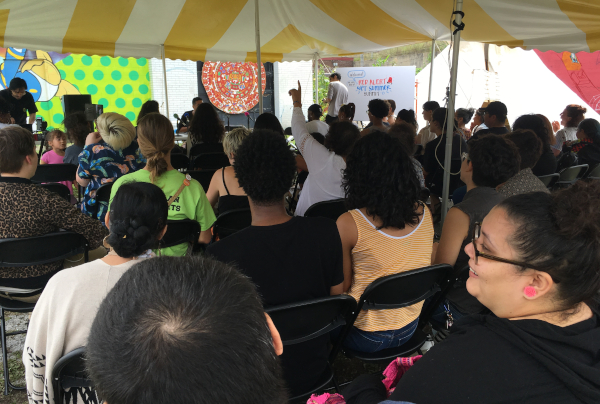
A Golden Moment of Opportunity
For the first time in 25 years, Chicago is evaluating land use in industrial corridors like the Calumet River. Chicago’s new mayor has opened the door to community involvement in the planning process.
“We may be in the midst of a perfect storm,” says Bautista. “The time for change is now.” And with leadership from Calumet Connect, the community will be ready to jump in.
The post Connecting for Clean Water on Chicago’s Southeast Side appeared first on Alliance for the Great Lakes.
News – Alliance for the Great Lakes
News – Alliance for the Great Lakes
https://greatlakes.org/2020/02/connecting-for-clean-water-on-chicagos-southeast-side/
Environmental improvements coming to Barker’s Island
Barker’s Island in Superior looks different than it did a year ago. Construction on the island’s public beach rearranged and added structures to help improve water quality and provide a better experience for swimmers.
More changes are in store for the next two summers, all designed to reduce stormwater runoff and protect water quality in the Superior Bay and ultimately, Lake Superior.
Conceptual designs were recently completed for work at the Barker’s Island Marina and will be completed in 2020 for areas around Barker’s Island Inn, thanks to several grants and cooperation among the two businesses and Sea Grant programs in Wisconsin, Michigan, and Ohio, as well as the City of Superior, the Wisconsin Coastal Management Program, The Ohio State University, and the Wisconsin Marine Association.
Three projects at the marina will begin work this summer. Four others at the inn will begin in 2021. Here’s the rundown.
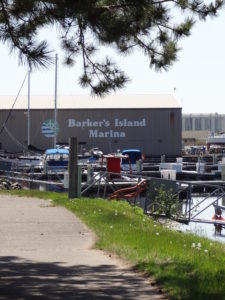
Barker’s Island Marina will be updated in 2020 with a stormwater wetland. The project will treat runoff from the service area and parking lot. Image by Marie Zhuikov, Wisconsin Sea Grant.
Barker’s Island Marina
A stormwater wetland will be created at Barker’s Island Marina in 2020 in an unused area along the coast to treat runoff from the service area and parking lot. Currently, runoff from these areas flows into a ditch and the harbor. As part of this, the marina will be graded and repaved to direct water toward the stormwater wetland. They will also install a boat wash station.
Julia Noordyk, water quality and coastal communities outreach specialist with Wisconsin Sea Grant, explains the importance of boat wash stations. “Copper anti-fouling paints are used on the bottoms of boats. At the end of the season when they’re power-washed, it just all sloughs off. You have some heavy metals potentially going into the water body. Boat wash stations are a really great thing. They capture the water rather than having it just drain directly into the lake.”
The second area is the parking lot at the marina where boats are stored for winter. The lot currently features a stormwater pond that doesn’t function properly. It sometimes floods, putting people and boats at risk. The design team plans to install an underground pipe so the pond can drain properly, plus a forebay to capture sediment coming off the parking lot, which will improve water quality.
If enough funds are left after the first two fixes, the third will be to install a large cistern to catch water off the roof of the marina maintenance building, delaying its flow into the bay. The water could be used for rinsing tanks and other water supply needs by the marina.
These activities are supported by a grant designed to advance stormwater management at Great Lakes marinas through the Great Lakes Protection Fund. As part of this project, a tool is being developed that will help marina owners and operators choose the best green infrastructure projects for their operations. Barker’s Island Marina is one of three marinas in the states of Wisconsin, Michigan, and Ohio chosen to test the tool and install the green infrastructure practices. Researchers from The Ohio State University and the Lake Superior National Estuarine Research Reserve will monitor the site before and after installation to record changes in water quality.
After completing the projects and adopting other best-management practices, Barker’s Island Marina will become a certified Clean Marina in the state of Wisconsin. The Clean Marina Program is designed to reduce pollution from marinas to protect Wisconsin’s waterways. Program staff conduct site visits to verify marina practices and provide training and technical support to marina and boatyard managers.
“I’m impressed by Barker’s Island Marina’s willingness to participate in this project and go through the certification process,” Noordyk said. “They understand that healthy water quality and a clean Lake Superior is crucial to their business plan.”
“It’s a unique opportunity to advance green infrastructure and help improve water quality at the marina, as well as improve its resiliency to coastal storms, and flooding,” said Todd Breiby, program coordinator with the Wisconsin Coastal Management Program, which is partnering with Sea Grant on the Great Lakes Protection Fund grant. “We’re hoping what we learn on Barker’s Island can be transferred to other locations and marinas around the state.”
The marina sits on city land, so the city of Superior is also involved.
“There’s a lot of really good energy on Barker’s Island right now,” said Andrea Crouse, water resources program coordinator with the city. “We know that a lot of boaters spend time on the water because they love being around water, and they value programs like the Clean Marina Program. We expect this will be a draw for people who are out on sailboats or motorboats on the lake – knowing that they could dock at a place where there’s a clean marina certification and good practices is something that people feel good about.”
Barker’s Island Inn
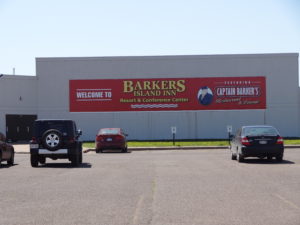
The parking lot at Barker’s Island Inn will get a “green” makeover in 2021. Image by Marie Zhuikov, Wisconsin Sea Grant.
Crouse said the city was recently awarded a grant for just under $500,000 from the National Fish and Wildlife Foundation’s Sustain Our Great Lakes Program to improve stormwater storage and reduce runoff impacts on Barker’s Island, including a “green” parking lot around Barker’s Island Inn. Conceptual plans call for installing infiltration medians and pervious surfaces around the lot edges in 2021 to discourage water runoff, and planting native trees and shrubs.
“We’re also exploring dark-sky lighting options for the parking lot,” Crouse said. “We’re thinking not only about water quality, but about how we can keep this a safe and well-lit area for people using it, while minimizing the ambient light that’s shining up into the sky or being directed to places that are problematic for wildlife.”
Across the road from the lot is a sandy area used as a catamaran launch, however, it was never an official site. Crouse said the area is eroding, sending sediment into the harbor. Plans involve creating an official launch and installing grass paving, which is a grid of plastic that can withstand the weight of vehicles and heavy foot traffic. This will stabilize the shoreline and prevent soil compaction and erosion.
And that walking trail that currently dead-ends across from the inn? Crouse said it’s going to be expanded. “Most people like walking in a loop, so we’re going to lengthen the trail to go around the hotel property and allow walkers to extend their hike,” she said. The trail will be constructed with low-impact practices, possibly a porous asphalt.
The final of the areas slated for work in 2021 are the tennis courts behind the inn. “They are in rough shape right now,” said Crouse. “We’ll be talking with the inn to discuss whether they want to keep one of those courts or none of them . . . But we’ll be removing several of them, at least, and putting in a green playground area so there will be more room for children and families that are using the space, as well as folks that are using the marina.”
Crouse said the timing of the projects is fortunate. “…Knowing that these projects might be happening at a similar time will allow us to be really efficient with city effort and funds so we can design these as much as possible in tandem. It’s a huge benefit to the public for us to be able to coordinate these projects together.”
News Releases – Wisconsin Sea Grant
News Releases – Wisconsin Sea Grant
https://www.seagrant.wisc.edu/news/environmental-improvements-coming-to-barkers-island/
There may be hope for an endangered frog in the Great Lakes region
Great Lakes Echo
http://feedproxy.google.com/~r/GreatLakesEcho/~3/ZpXQQuUgjcs/
Alliance Announces Exciting Updates to Adopt-a-Beach Website
While it’s been too cold for Adopt-a-Beach, we’ve been cooking up some big things here at the Alliance. We’re happy to share that this year, we are launching a new and improved Adopt-a-Beach website.
New Website Launches March 18th
The new Adopt-a-Beach system will streamline the process for volunteers to find and sign up for events (no login!). It will also make it super easy to manage your cleanup event (mobile friendly!). And the new system will be flexible to change with the times as the program grows.
The new site will launch on March 18th, and we’re planning several in-person and online training sessions for team leaders in the coming weeks. The training sessions will include a demo of the new system, allow time for questions, and give team leaders everything needed to for a successful Adopt-a-Beach event.
Spring Kickoff April 25th
This year, the Adopt-a-Beach season will kick off with one day of action on April 25th, in honor of the 50th anniversary of Earth Day. Cleanups on any date in April are welcome, but we’re planning some fun things around Earth Day on April 25th.
Before the March 18th launch, team leaders will not be able to create cleanup events. Once the new site launches, team leaders will be able to create events, and volunteers will be able to find and register for cleanups.
We’re so excited to unveil this new, user-friendly site in time for the Adopt-a-Beach season. Keep your eye out for updates, behind-the-scene sneak peeks, and some special surprises in the coming week to celebrate the site launch and the 50th anniversaries of Earth Day and the Alliance!
The new site was made possible thanks to the generosity of the Fund For Lake Michigan.
The post Alliance Announces Exciting Updates to Adopt-a-Beach Website appeared first on Alliance for the Great Lakes.
News – Alliance for the Great Lakes
News – Alliance for the Great Lakes
https://greatlakes.org/2020/02/adopt-a-beach-2020-new-site-announcement/
Find Your Adventure: Apply For The 2020 Elk Hunt Starting March 1
Wisconsin DNR Weekly News
https://dnr.wi.gov/news/Weekly/Article/?id=4734
Permanent Catfish Bow, Crossbow And Hand Fishing Regulations Effective March 1, 2020
Wisconsin DNR Weekly News
https://dnr.wi.gov/news/Weekly/Article/?id=4736
New Fishing Regulations Effective April 1, 2020
Wisconsin DNR Weekly News
https://dnr.wi.gov/news/Weekly/Article/?id=4735
Dozens Of Projects Receiving Grants To Reduce Harmful Diesel Emissions
Wisconsin DNR Weekly News
https://dnr.wi.gov/news/Weekly/Article/?id=4738
Service seeks public comment on draft recovery plan for eastern massasauga rattlesnake
Fish and Wildlife Service News
Fish and Wildlife Service News
http://www.fws.gov/news/ShowNews.cfm?ref=service-seeks-public-comment-on-draft-recovery-plan-for-eastern-m&_ID=36587
Irrigation hides climate change threats to streams, water scorpions, trout
Great Lakes Echo
http://feedproxy.google.com/~r/GreatLakesEcho/~3/jVxP9XVgoqM/
Freshwater Weekly: February 22, 2020
|
||||||||||||||||||||||
|
||||||||||||||||||||||
|
Blog – Freshwater Future
https://freshwaterfuture.org/uncategorized/freshwater-weekly-february-22-2020/
Clearing the air over northern Michigan pollution
Great Lakes Echo
http://feedproxy.google.com/~r/GreatLakesEcho/~3/dB7-Ulxvk3I/
Environmentalism 2.0: Our Holistic Approach in Ohio
If it takes a village to raise a child, imagine how many people it will take to raise the quality of the Great Lakes.
Part of the Alliance’s approach to protecting the Great Lakes is the understanding that we can’t do this alone. We rely on an incredible network of partnerships to build new relationships to tackle water problems and challenges from different perspectives.
In Ohio, Crystal M.C. Davis, the Alliance’s Director of Policy and Strategic Engagement, works to prioritize relationships with local groups that have deep roots in the community. She began with outreach, hosting listening sessions in northern Ohio communities. And, only after listening carefully and hearing community concerns, she partnered with local and state-wide groups to educate and train advocates.
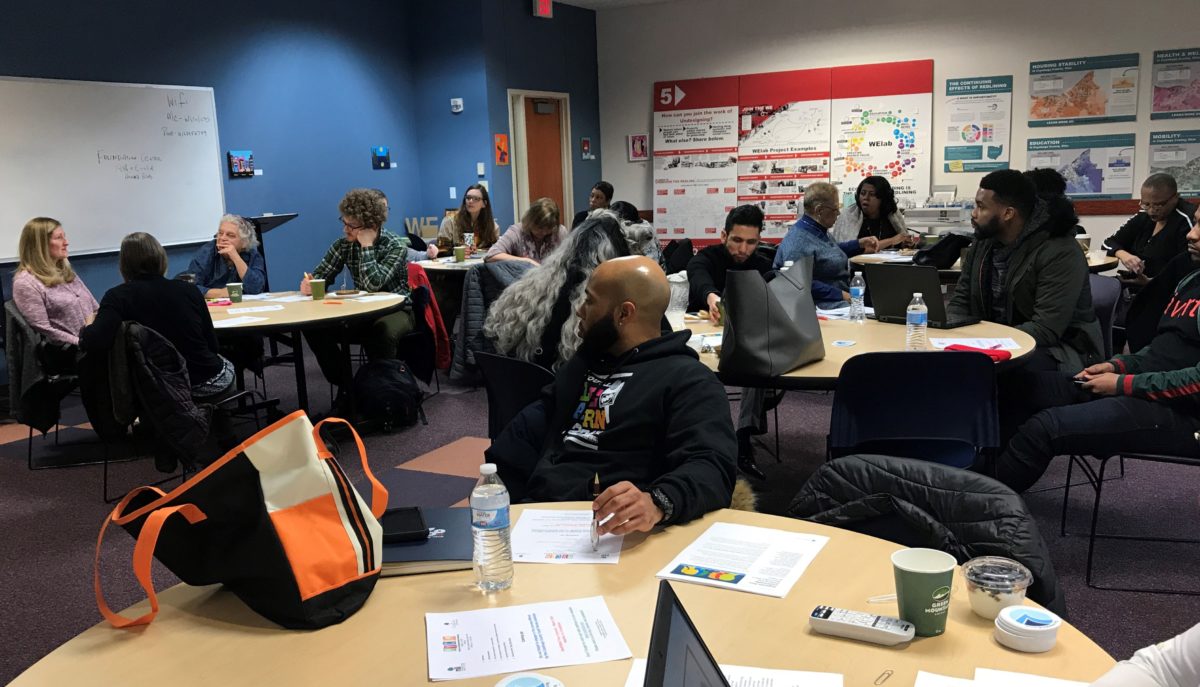
“We’re educating folks to inspire action and build relationships for the long-term,” explains Davis. “When the legislature acts on potential policy, sometimes we have very little time to respond. Educating our communities now enables us and residents to respond more quickly when it’s most important.”
Two of our partners, the Trust for Public Land, and the Environmental Health Watch, focus on more than water issues. The Trust for Public Land works to create Ohio parks and natural areas. They safeguard the state’s natural, recreational, cultural, and agricultural resources and promote park equity for future generations. Environmental Health Watch provides education, advocacy, and direct services to families while also working alongside policy makers to spotlight and confront critical environmental health issues in Ohio. Both appreciate the role water plays in their work and need to address water-related challenges. Working with these partners allows us to build broad coalitions to tackle some of Ohio’s most pressing environmental issues.
In her work training advocates, Davis heard from community groups that they prefer a holistic approach to issues. “Environmental and quality of life issues are connected and talking about them in a connected way, helps elevate them on a priority list,” she said. “We’re talking about land, water, and the impact on disadvantaged communities. That’s all connected.”
Developing Partnerships with Shared Goals
Even though Great Lakes communities sit on the shores of the world’s largest surface freshwater lakes in the world, many residents do not have affordable, clean, safe drinking water from their taps. A key focus of our partnerships is with groups working with water issues at the end of the tap. And one of the greatest challenges ahead is addressing lead in drinking water.
It was through community group meetings that Davis connected with Kim Foreman, Executive Director at Environmental Health Watch. Foreman was called to her work earlier in her career. When she was a part-time tutor, she remembers working with a child who could not remember the alphabet. It was the result of lead exposure in the home.
Years later, Kim Foreman is Executive Director at the Environmental Health Watch (EHW), and was recently awarded the Community Collaboration Award from the Ohio Environmental Council for her work on the Lead Safe Cleveland Coalition, among many others accolades and awards. She is highly regarded for her expertise in authentic community engagement and lead issues.
When exposed to lead, the body mistakes it for calcium and iron. Small children take in 50 percent of the lead they are exposed to. Foreman explains the impacts range from a decreased IQ , to lack of impulse control, and anemia. “Lead sits in the bones, leaving a lifelong body burden of lead,” says Foreman.
She works to inform the public. “People know lead is bad,” she says. “But they are [less educated] about the long term effects, what to do about it, or how to protect their families.” She works with community leaders and partners, like the Alliance, to increase awareness of the issue and build capacity to progress policy solutions.
Although the EHW focuses on lead in the home, and the Alliance focuses on it in drinking water service lines, we have the same end goal – eliminate lead contamination on our communities and ensure the financial burden doesn’t fall on the backs of our most disadvantaged communities. We are working together to build a strong, informed, and passionate base of people ready to take action and speak out on this critical issue.
Like the Alliance, Foreman is focusing on how to connect people to policy. “I can’t speak for everyone, we have to build capacity for them to speak for themselves…No matter what the issues are, [people in the community] can work on them, because they understand how decisions get made,” she says.
Our partnership with the Trust for Public Land (TPL) takes a different approach. The Trust for Public Land has a program called “Great Waters,” which focuses on protecting Lake Erie and Ohio’s watersheds. Watersheds are the land area that channels rainfall to creeks, streams, and rivers, and eventually to outflow points such as Lake Erie. Without healthy land, it is impossible to have healthy lakes, since what goes into the land will run into the water.
“We made our mark by starting to purchase and conserve land as the Cuyahoga Valley National Park,” says Shanelle Smith, TPL’s Ohio State Director. This land purchase protects large areas of land along the Cuyahoga River from development, helping it return to health by keeping natural systems in place. In 2019, the region marked the 50th anniversary of the Cuyahoga River Burning and the rebirth of the river.
“If we’re protecting the land, it helps remediate the river. There are not large developments or encroachment that could threaten the health or comeback of the river,” says Smith. Additionally, the Trust has bought thousands of acres along Lake Erie, protecting the land, which in turn helps improve water quality.
The relation between water and land being undeniable. TLP’s work to protect the land near the Cuyahoga River and Lake Erie has lasting benefits to our health, economy and environment.
Building strong partnerships with groups like Trust for Public Land and Environmental Health Watch, we are developing a multi-prong approach to protect Lake Erie, our local rivers and streams, and the water flowing into our homes.
The post Environmentalism 2.0: Our Holistic Approach in Ohio appeared first on Alliance for the Great Lakes.
News – Alliance for the Great Lakes
News – Alliance for the Great Lakes
https://greatlakes.org/2020/02/annual-report-ohio-partnerships/
2020 Spotter Training Schedule – Starting Mid-March!
Green Bay, WI
https://www.weather.gov/www.weather.gov/grb/spotterschedule
Giving Back to the Great Lakes
Volunteering is a great way for businesses to support the Great Lakes and provide employees an opportunity to get involved too. The Adopt-a-Beach program helps corporate sponsors engage in philanthropy, increase team bonding, and enjoy a day at the beach. We spoke to two sponsors about their experience. Answers have been edited for clarity and length.
AMLI Residential is focused on the development and management of luxury apartment communities across the U.S. AMLI has coordinated two annual beach clean ups with Alliance for the Great Lakes, and have scheduled a third in July. They have cleaned up over 500 pounds of trash. We spoke to Marti Smith, manager, administrative services at AMLI about the experience.

Why did you decide to organize and sponsor a cleanup?
AMLI is dedicated to providing opportunities for our employees and residents to be good citizens and give back to the community in which they live and work in charitable and sustainable ways. The Adopt-a-Beach program was a perfect fit for our effort to identify a sustainably-focused volunteer activity for our Chicago corporate and onsite employees to participate in together.
What is your office’s connection to the lakes?
With a focus on sustainability, our apartment communities are dedicated to using land, water and energy more efficiently. AMLI works hard to provide initiatives and amenities that allow our residents to live more sustainably. AMLI’s national headquarters is located in downtown Chicago and AMLI owns and manages six apartment communities in the metro area. We understand the importance of the Great Lakes to this region and want to do our part in protecting the lakes today and for future generations.
Why is philanthropy important to your business?
Our AMLI Famli Volunteer program is an important part of the culture. The program helps those in need and builds community and connections among our team members and residents. Many of these activities are environmentally and sustainability focused. Whether it’s building a public park, packing items at a local community food bank or organizing a beach clean-up, AMLI is committed to giving back to the cities and neighborhoods we call home.
How was Adopt-a-Beach received by your team this year?
The Adopt-A-Beach staff is always very helpful and easy to work with! The staff educated and assisted our team by explaining reasons and goals of our activity and communicating what items need to be picked up during the clean-up — and they are always standing by to cheer our team on to do more. Working with Alliance for the Great Lakes has heightened and strengthened AMLI’s focus on sustainability and has been a positive and fun experience for our team.
What was the best or most memorable part?
Our team loves healthy competition so we encouraged our employees to pick up more trash than they picked up the previous year. For our first clean-up, we picked up 236 pounds of trash. Last year, we picked up 262 pounds of trash.
Meijer Grocery Store opened its first store in Greenville, Michigan in 1934. They now operate almost 250 stores in five Great Lakes states. Meijer hosted three Adopt-a-Beach cleanups in 2019 and is slated to do more in 2020. We talked to them about their experience.

Why did you decide to organize and sponsor a cleanup?
Meijer is a Great Lakes retailer. Given the important role that these unique water bodies play in providing recreation, drinking water, economic opportunities, and cultural significance throughout the region, Meijer is committed to protecting them through actions like sponsoring cleanups and supporting organizations like the Alliance for the Great Lakes.
Why is charitable giving/philanthropy important to your business?
As a family-owned company, Meijer was built on a fundamental philosophy of enriching lives in the communities we serve. As a result, we donate more than 6 percent of our net profit every year to nonprofit organizations throughout the Midwest and sponsor hundreds of other family-friends events that are important to our team members and our customers, including those that help protect our environment.
How was Adopt-a-Beach received by staff this year?
There was great enthusiasm from the Meijer team members who participated in the Adopt-a-Beach cleanups last year. Many of them were able to bring their families to participate and found that it was a great opportunity to teach their children about environmental stewardship.
What was the best or most memorable part?
Our Meijer team members felt accomplished after seeing the amount of trash they were able to collect during these clean ups.
Was there any impact on the staff after the event?
One Meijer team member remarked that she will never look at a beach the same way again. Now that she has the eye for spotting the small pieces of trash in the sand, she will forever do her part to keep our beaches clean!
These are just two stories of many from our corporate sponsors. Thank you to everyone who has supported the Alliance and the Adopt-a-Beach program. For a complete list of donors, check out our 2019 financials.
The post Giving Back to the Great Lakes appeared first on Alliance for the Great Lakes.
News – Alliance for the Great Lakes
News – Alliance for the Great Lakes
https://greatlakes.org/2020/02/adopt-a-beach-corporate-sponsor-q-a/
Green Bay’s Blue Future
For years, Green Bay has been plagued with harmful algae blooms and a deadzone. But on March 5, 2019 at Lambeau Field, the Alliance scored a victory on the path to make Green Bay more blue. Four county executives, representing the surrounding Brown, Outagamie, Winnebago and Fond du Lac counties, and the Oneida Nation signed the Northeast Wisconsin Water Quality Pact.
Oneida Nation Vice-Chairman Brandon Stevens joined Troy Streckenbach of Brown County; Tom Nelson of Outagamie County; Mark Harris of Winnebago County; and Allen Buechel of Fond du Lac County to sign this historic agreement. The agreement signifies their long-term commitment to improving the health of Lake Winnebago and Green Bay.
Green Bay has less than 2 percent of Lake Michigan’s water but receives more than one third of the phosphorus in the whole lake – a recipe for harmful algal blooms. And, every year, Green Bay suffers from a large deadzone, an area of low oxygen devoid of aquatic life, caused by excessive nutrients. All of these nutrients are carried into the water by runoff pollution, also called nonpoint pollution, and the largest single source comes from agricultural lands in the surrounding Fox and Wolf River watersheds, which comprise nearly one third of the state.
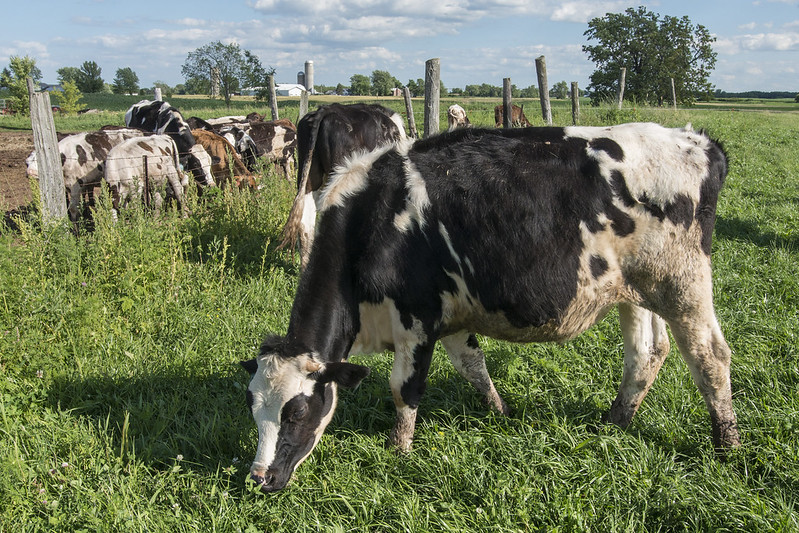
By signing the pact, the officials agreed to prioritize the significant reduction of nonpoint nutrient pollution entering their county’s waterways. The pact commits them to draft and adopt water quality goals, target dates, and metrics that will be incorporated into a management plan and a governance program for the watershed.
Since singing the Pact, the Alliance has worked with the parties to set a goal of a 60% reduction in phosphorus by 2040 with a more aggressive interim goal to achieve 30% by 2030. While the 30 for 30 goal is half of the ultimate goal, scientists and watershed managers expect even then to see significant benefits to the Bay.
“It is anticipated that achieving the significant 30 percent reduction in phosphorus in the Lower Fox River will significantly reduce dead zones, algae outbreaks, sediment plumes and nutrient pollution,” said Alliance Senior Policy Manager Todd Brennan. “In turn, regional stakeholders expect to experience healthier wildlife, improved recreation, less dredging, healthier soils and improved economic prosperity.”
The agreement was a significant step for the work the Alliance has been doing in the area. Last year, the Alliance held a series of clean water roundtables with farmers, researchers, government officials, business leaders, and more. Participants shared their perspectives on water quality and talked about what they can do to improve it. The roundtables were the first time many of the stakeholders were in the same room together and at the same table discussing Green Bay’s water quality problems. This innovative approach was a key step leading to the new water quality pact.
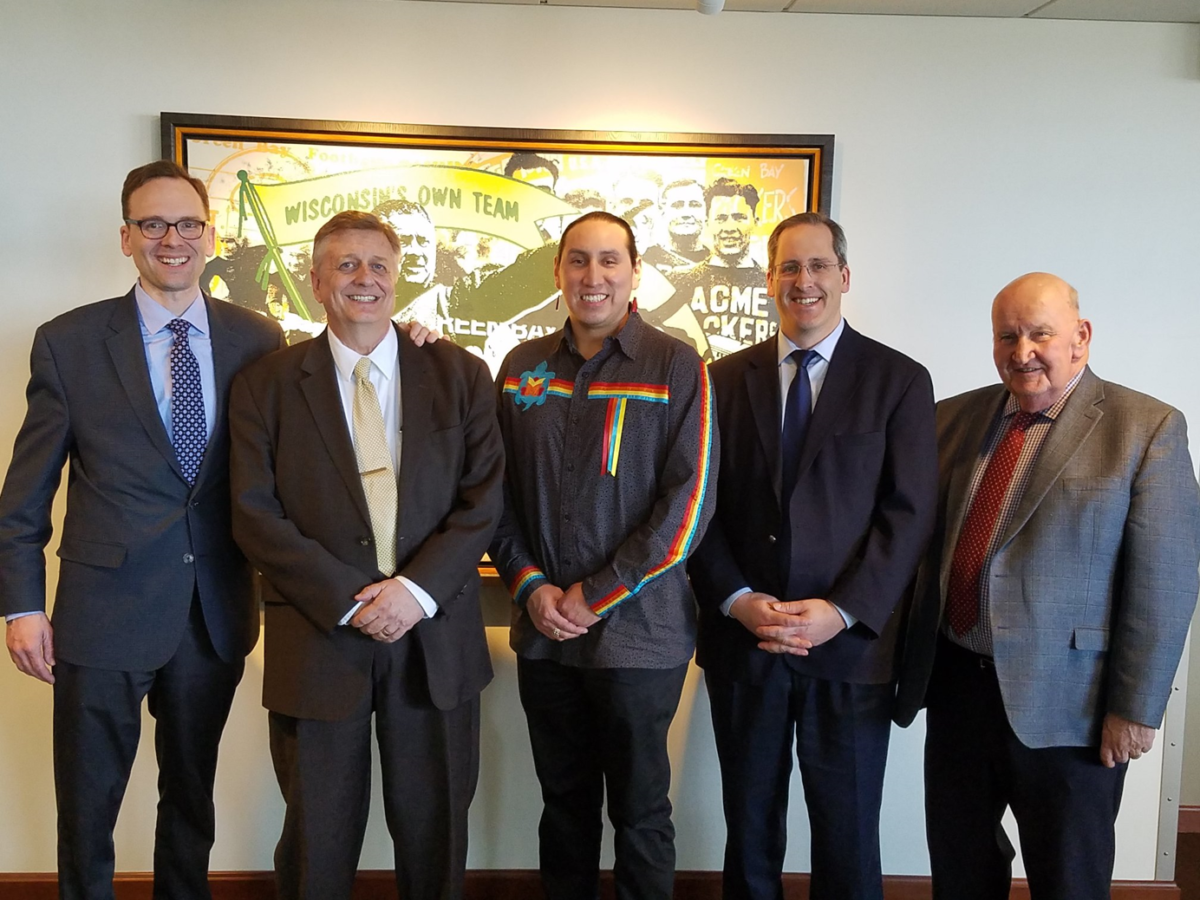
The signers of the pact, who were convened by the Alliance, are all vocal supporters of clean water and improving the watershed.
“It is our responsibility to ensure that our waterways are protected and maintained. Our Nation’s ancestors have utilized these waters since our arrival in the 1800s. The waters here were clean and pristine… a place where wild rice grew and the fish were abundant. It is our hope that one day these waters will once again be restored,” said Stevens, in a blog on Oneida Nation.
On Facebook, Brown County Executive Troy Streckenbach posted, “Today, I’m pleased to sign the Northeast Wisconsin Water Quality Pact to further highlight a shared vision for clean water in our whole region.”
In an interview with ABC2, Outagamie County Executive Tom Nelson said, “This is going to be good not only here in northeast Wisconsin, but working at best practices and ways in which we can show the rest of the state, the rest of the country.”
The pact is the first step on a long journey of improving the Bay, but through a diverse and regional approach, the Alliance is optimistic about our work for the blue future of Green Bay.
The post Green Bay’s Blue Future appeared first on Alliance for the Great Lakes.
News – Alliance for the Great Lakes
News – Alliance for the Great Lakes
https://greatlakes.org/2020/02/annual-report-green-bay-pact/
Akinomaage: Teaching From the Earth
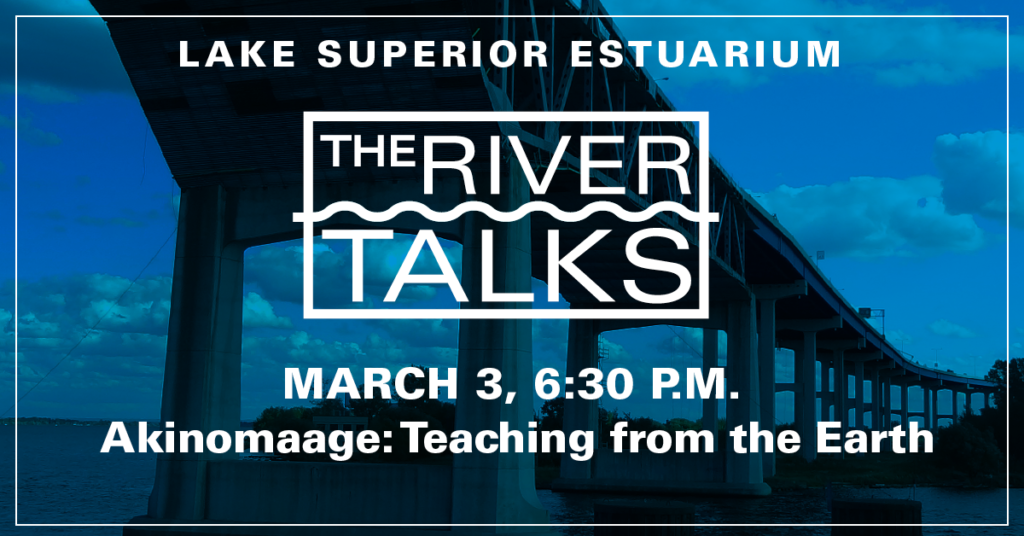 The River Talk series continues this month, but will be held in a different location and day of the week. At 6:30 p.m. on Tuesday, March 3, in the French River Room 1 at the Duluth Entertainment Convention Center (350 Harbor Drive, Duluth, Minnesota), Vern Northrup, member of the Fond du Lac Tribe of Lake Superior Chippewa, will present “Akinomaage: Teaching From the Earth.” Northrup will discuss how he uses photography as a tool to educate both himself and viewers about the rhythms of nature, the preservation of tradition, and the relationship between resilience and sustainability.
The River Talk series continues this month, but will be held in a different location and day of the week. At 6:30 p.m. on Tuesday, March 3, in the French River Room 1 at the Duluth Entertainment Convention Center (350 Harbor Drive, Duluth, Minnesota), Vern Northrup, member of the Fond du Lac Tribe of Lake Superior Chippewa, will present “Akinomaage: Teaching From the Earth.” Northrup will discuss how he uses photography as a tool to educate both himself and viewers about the rhythms of nature, the preservation of tradition, and the relationship between resilience and sustainability.
Northrup’s talk is being held in conjunction with the St. Louis River Summit. River Talks are free and open to all, however, participants will need to pay a DECC parking charge. Refreshments are provided.
The Lake Superior National Estuarine Research Reserve and the Minnesota and Wisconsin Sea Grant programs offer this series of informal evening talks about the St. Louis River Estuary.
Other River Talks will be held on April 8 and May 13. For more information, visit go.wisc.edu/4uz720. If you miss a talk, visit Wisconsin Sea Grant’s blog for a summary.
News Releases – Wisconsin Sea Grant
News Releases – Wisconsin Sea Grant
https://www.seagrant.wisc.edu/news/akinomaage-teaching-from-the-earth/
Wisconsin Sea Grant kicks off new series of public talks with March 4 Green Bay event
Educators will discuss life aboard a replica 19th-century schooner for a shipboard science workshop
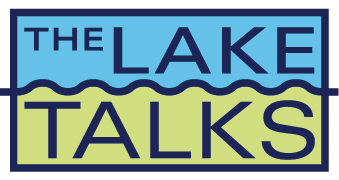 Wisconsin Sea Grant is launching a new series of free, public talks called “The Lake Talks.” The talks will take place in communities on or near Lake Michigan and touch upon issues of importance to the Great Lakes.
Wisconsin Sea Grant is launching a new series of free, public talks called “The Lake Talks.” The talks will take place in communities on or near Lake Michigan and touch upon issues of importance to the Great Lakes.
The first event will be held at the Neville Public Museum (210 Museum Place) in Green Bay on Wednesday, March 4, from 6:30 to 7:30 p.m. The topic is “Setting Sail for Great Lakes Learning.”
Admission to the Neville Museum is free for Brown County residents after 5 p.m. on the first Wednesday of each month, so area residents will be able to visit the museum and attend the talk for free.
“Setting Sail for Great Lakes Learning” will be a panel with time for audience questions. The speakers will be three educators who set sail from St. Ignace, Mich., in August 2019 aboard a replica 19th-century schooner, the Denis Sullivan.
Over the course of six days, they sailed to Duluth, Minn., along with 13 other educators. Their main purpose was a shipboard science workshop focusing on Great Lakes ecology, water quality, and awareness of tribal approaches to research and natural resource management.
While engaging in a busy schedule of science activities, the educators were also expected to pull their weight as crew members sailing the three-masted schooner, from swabbing the deck to keeping watch at night.
Attendees will hear from panelists about the challenges and high points of this unique voyage and how it enhanced their classroom instruction once they got home. Panelists are: Kelly Koller, Howard-Suamico School District; Dave Landers, Pulaski Community Middle School; and Christina Dzwonkowski, conservation warden with the Great Lakes Indian Fish and Wildlife Commission.
All are welcome at this event. It will be of special interest to those with an interest in the Great Lakes, sailing, science (including citizen science efforts) and Ojibwe culture.
Future installments of the Lake Talks will take place in Green Bay on May 28 at the STEM Innovation Center on the UW-Green Bay campus, and on May 30 in Kenosha at Public Craft Brewing Co. Those events are also free and open to the public; more details will be released soon on the Lake Talks page.
News Releases – Wisconsin Sea Grant
News Releases – Wisconsin Sea Grant
https://www.seagrant.wisc.edu/news/wisconsin-sea-grant-kicks-off-new-series-of-public-talks-with-march-4-green-bay-event/
Freshwater Weekly: February 16th, 2020
|
||||||||||||||||||
|
||||||||||||||||||
|
Blog – Freshwater Future
https://freshwaterfuture.org/uncategorized/freshwater-weekly-february-16th-2020/
A special place for science: UW-M Field Station at the Cedarburg Bog
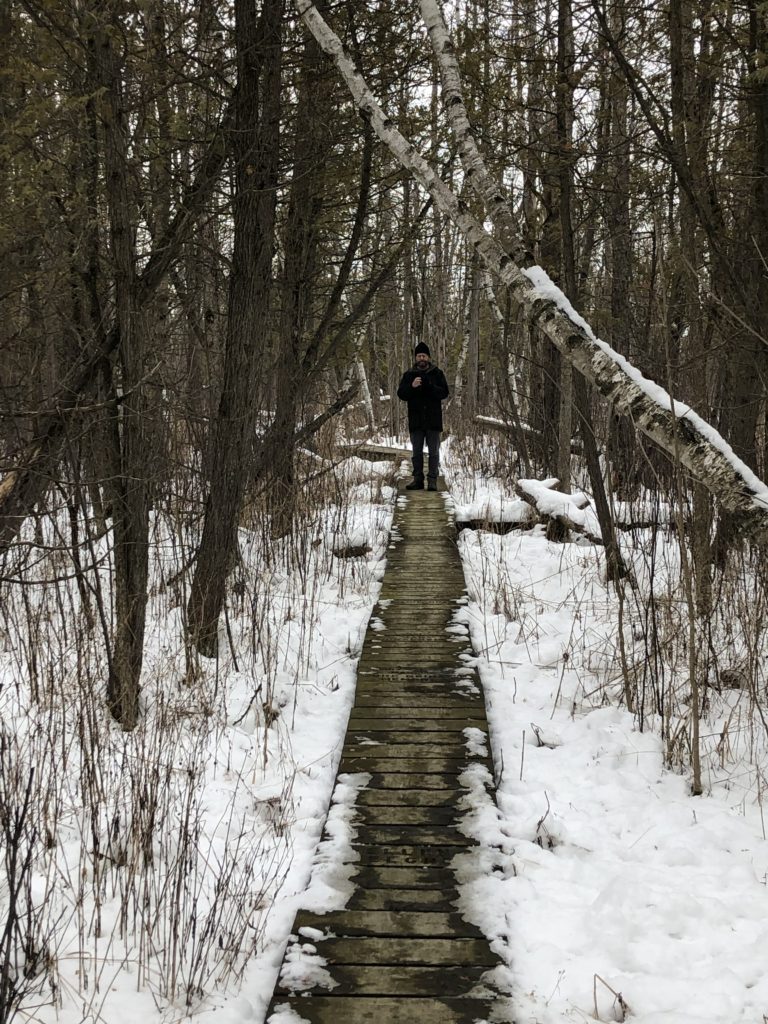
A boardwalk extends into North America’s southernmost string bog, offering a spot for teaching and research. Image by Moira Harrington
I was recently invited to visit the 320-acre University of Wisconsin-Milwaukee Field Station at the Cedarburg Bog State Natural Area. It was the last day of January. The tree swallows were absent, instead soaking in the warmth of their winter-migration homes to the south. The frogs were toughing out the cold Wisconsin conditions, buried in mud or hunkered under leaf piles and rocks, remaining inactive. The prairie flowers were likewise dormant, waiting for warmer temperatures before they will again show off colorful petals perched atop long stems.
Amid this winter somnolence, you might presume not much is happening at the field station. That would be inaccurate. The phenology camera is snapping away and adding information to an online dataset international in scope. The lab and its supportive equipment is primed and ready for the 2020 field season. The weather station continues to collect data, contributing in part to a current project funded by Sea Grant’s sister organization, the University of Wisconsin Water Resources Institute.
In addition, the tree swallow transect arrays were in place for when UW-M researcher Peter Dunn returns to continue his work in understanding the relationship between food abundance and breeding.
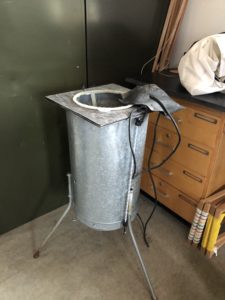
This “bug sucker” captures bugs for a tree swallow study. Peter Dunn, professor of biological sciences at the UW-Milwaukee, has a long-term study to understand the relationship between food abundance and breeding of these birds found in Wisconsin’s open, treeless areas. Image by Moira Harrington
Soon, UW-M’s Gerlinde Höbel and her team will take up monitoring the rate and duration of male Eastern gray tree frog calls and which calls are most attractive to females. I saw Höbel’s “frog arena,” as field station Acting Director Gretchen Meyer termed it—a heavily soundproofed room with an enclosed area where a female frog would be placed while calls for her consideration are pumped in.
When the mercury climbs, Phil Hahn will be back from the University of Montana. He and his research group are conducting a three-year project on plant defenses against herbivory, comparing Wisconsin and Montana sites.
This group of researchers, Meyer said, “are a part of a core group of people whose projects go on long-term.”
Added to the mix are projects that are assessed on a case-by-case basis with recommendations from her and review by an eight-person field station committee. The assessment is based on: will the work introduce new species, will there be an impact from collecting and how would the proposed research interact with what is currently underway.
“We do consider the scientific merit of the proposed project as well. It’s a balance. What we have now is working well.” Meyer noted, though, “Most of what we get is easy to approve.”
She continued, “We want to enhance people’s appreciation and let them know what a special place the bog is.”
Special indeed. Meyer explained the area is a string bog, so named because, seen from above, the topography resembles strings. This is a factor of the tamarack and cedar growth alternating with shorter vegetation. Other features round out the area—sedge meadow, hardwood swamp, conifer swamp, orchids, lakes and some landscape in virtually pre-settlement condition.
The bog is the southernmost string bog in North America. Its closest cousin is found in Michigan’s Upper Peninsula but is inaccessible. Here in Saukville, Wisconsin, a boardwalk stretches into the bog. A site for teaching and outreach, Meyer said it gets the most use at the field station.
Through the Friends of Cedarburg Bog, there’s a robust offering of public programming. Aside from that, the public can visit Wisconsin Department of Natural Resources-owned sections of the larger, 2,189-acre property.
Natural history workshops for college credit are taught at the field station through UW-M’s Biological Sciences Department. The courses are also open to the public. Check them out, https://uwm.edu/field-station/workshops. A course, Field Methods in Conservation, was held entirely at the station during the fall semester.
The field station, then, is critical to the advancement of science. Like the UW-Madison Center for Limnology’s Trout Lake Station, Canada’s IISD Experimental Lakes Area or Georgia’s Marine Institute on Sapelo Island—all places where Sea Grant or Water Resources Institute researchers have conducted fieldwork—we’re fortunate these pockets of learning and exploration exist.
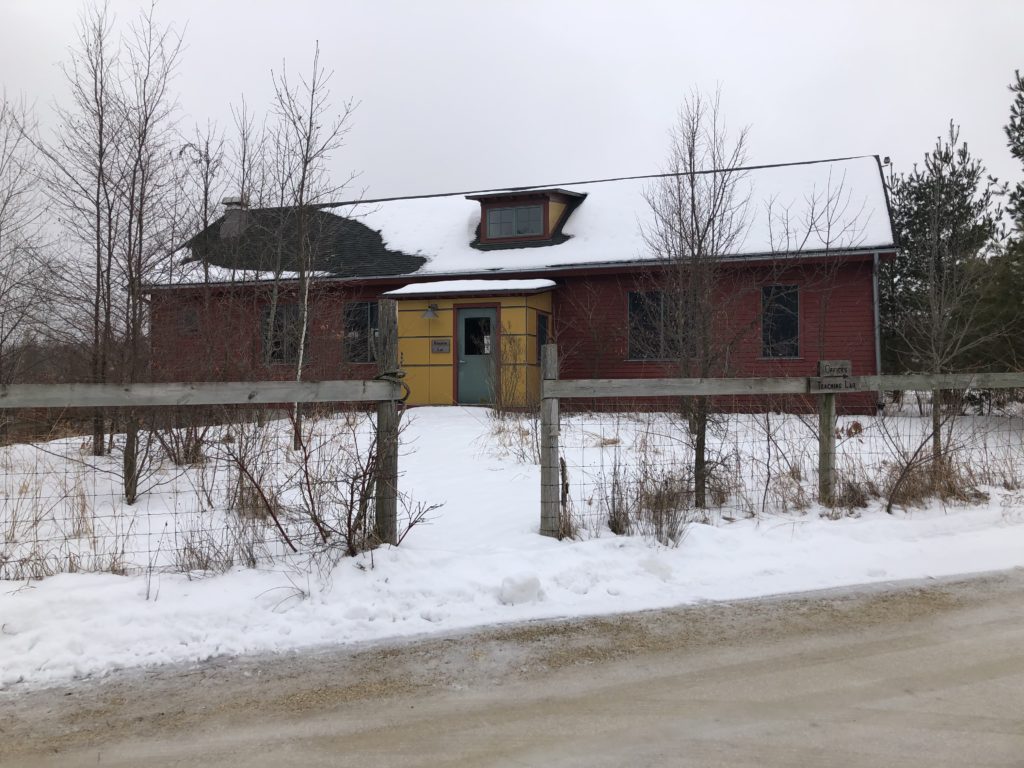
The Cedarburg Bog lab stands ready and waiting for the kickoff of the summer 2020 field season. Image by Moira Harrington
Blog – Wisconsin Sea Grant
https://www.seagrant.wisc.edu/blog/a-special-place-for-science-uw-m-field-station-at-the-cedarburg-bog/
More Near-Record Warm Years Are Likely On Horizon
NCEI News Feed
http://www.ncei.noaa.gov/news/projected-ranks
Attending the 2020 Ocean Sciences Meeting
NCEI News Feed
http://www.ncei.noaa.gov/news/NCEIatOSM20
Ohio Announcement on Development of a Pollution Diet for Western Lake Erie a Step in the Right Direction
Cleveland, OH (February 13, 2020) – Earlier today, Ohio Environmental Protection Agency (EPA) released the draft 2020 water quality report required by the Clean Water Act. In it, the agency announced its plans to develop a Total Maximum Daily Load (TMDL) for the western basin of Lake Erie. Western Lake Erie is plagued annually by harmful algal blooms, threatening the lake’s ecosystem and human health. A TMDL is essentially a pollution diet, setting forth a plan to reduce the pollutants that cause the lake’s harmful algal blooms.
In response to Ohio EPA’s announcement, Alliance for the Great Lakes Director of Policy and Strategic Engagement Crystal M.C. Davis release the following statement:
“We applaud today’s announcement by Ohio EPA that it will develop a Clean Water Act TMDL for western Lake Erie. The Alliance for the Great Lakes, along with thousands of concerned Ohioans, have called for the development of a TMDL for the past several years. A TMDL for western Lake Erie will provide the state with another tool to reduce the pollution causing the lake’s harmful algal blooms that threaten human health and the environment.
A TMDL, coupled with a $172 million investment through the new H2Ohio program, is building a strong strategy for preventing harmful algal blooms in western Lake Erie. We need every tool available to solve this problem.
Today’s announcement is just the beginning of the process. We will be paying close attention to the details as the TMDL is developed to ensure it is a strong tool for protecting Lake Erie.”
###
Media contact: Jennifer Caddick, (312) 445-9760, jcaddick@greatlakes.org
The post Ohio Announcement on Development of a Pollution Diet for Western Lake Erie a Step in the Right Direction appeared first on Alliance for the Great Lakes.
News – Alliance for the Great Lakes
News – Alliance for the Great Lakes
https://greatlakes.org/2020/02/statement-development-of-a-pollution-diet-for-western-lake-erie/
Assessing the Global Climate in January 2020
NCEI News Feed
http://www.ncei.noaa.gov/news/global-climate-202001
St. Louis River Summit celebrates 10 years of collaboration
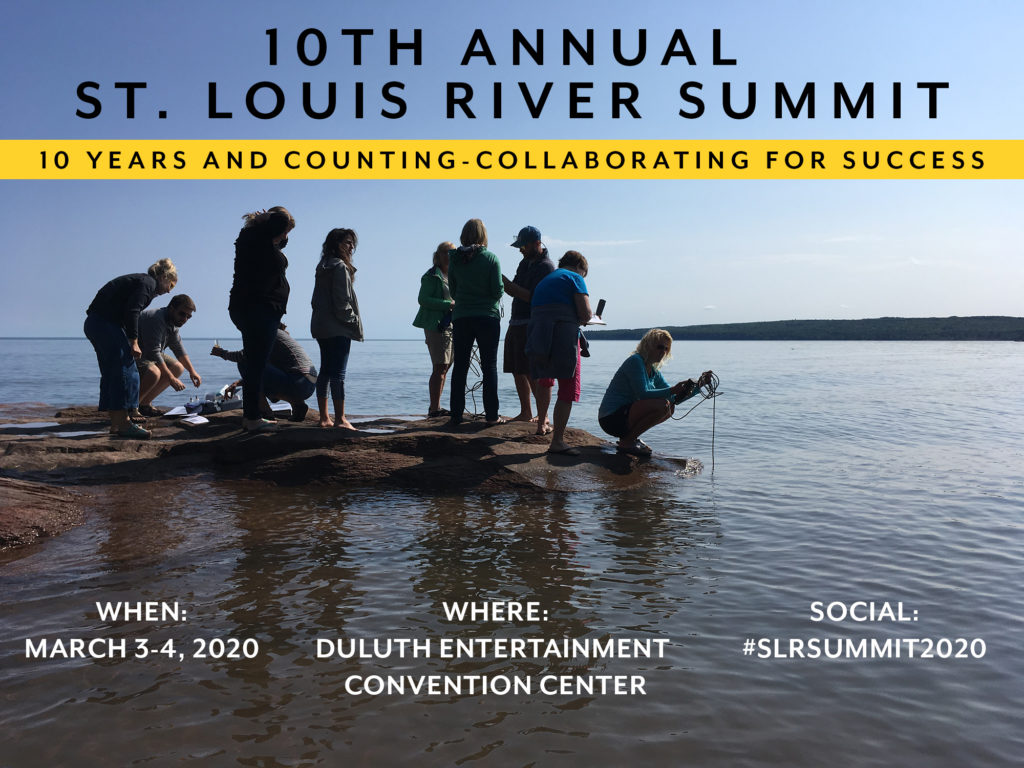
Wisconsin Sea Grant is among the sponsors of the 10th annual St. Louis River Summit, March 3-4 at the Duluth Entertainment Convention Center, 350 Harbor Drive, in Duluth, Minnesota.
The Lake Superior National Estuarine Research Reserve (Lake Superior Reserve) is organizing the event with the theme, “Ten Years and Counting: Collaborating for Success,” which highlights the power collaboration has had in protecting and restoring the St Louis River Estuary. The goal of the summit is to bring together key audiences working in the region to share information about the St. Louis River and encourage coordination of activities and funding proposals.
“The strides we have made toward a delisting of the U.S. EPA-designated Area of Concern (AOC) have benefited immensely from the many partnerships that have been cultivated over the last decade,” said Erika Washburn, Lake Superior Reserve manager. “We hope you will join us to celebrate our progress over the last 10 years and look toward the future.”
A keynote panel on March 3 will feature facilitation by Pat Collins, natural resources program consultant with the Minnesota Department of Natural Resources. Collins has been involved in the setup of the St. Louis River AOC since the beginning decades ago, and will share his insights into progress made, with participation from other professionals involved in the process.
A March 4 panel will feature members of the local news media who will explain how they choose stories to cover and how their coverage of the St. Louis River has changed over the years.
During lunch on March 3, listening sessions will be offered by local congressional staff representatives, and an ecopsychology session will be held by Leah Prussia, professor at the College of St. Scholastica.
A poster session will take place 4:30 to 6:30 p.m. on Tuesday, March 3. At 6:30 p.m. in the French River Room at the DECC, Vern Northrup, member of the Fond du Lac Tribe of Lake Superior Chippewa, will present, “Akinomaage: Teaching From the Earth.” Northrup will discuss how he uses photography as a tool to educate both himself and viewers about the rhythms of nature, the preservation of tradition, and the relationship between resilience and sustainability.
This evening talk with refreshments is being held as part of the popular monthly River Talk series. These events are free and open to all, however participants will need to pay a DECC parking charge.
College students from local institutions can attend the Summit for free to learn more about the research community and river projects. A student career information lunch will be held on March 4.
Summit pre-registration is required for full-day participation. The cost is $30, which includes lunch and refreshments. Students are free, but need to register. The deadline is Sunday, March 1. To register and view the agenda, visit lakesuperiorreserve.org.
Other initial sponsors include Duluth Pottery, Minnesota Land Trust, Wisconsin Coastal Management Program, Wisconsin Department of Natural Resources and Wren Works, LLC.
Blog – Wisconsin Sea Grant
https://www.seagrant.wisc.edu/blog/st-louis-river-summit-celebrates-10-years-of-collaboration/
Press Briefing: Trump Budget Undermines Drinking Water, Great Lakes Priorities
Proposed budget guts funding for clean water infrastructure, EPA. Advocates look to Congress to support clean water programs that millions of people depend on.
ANN ARBOR, MICH. (February 12, 2019) – Great Lakes advocates decried President Trump’s 2020 budget, pointing to drastic cuts to programs that support drinking water infrastructure, wastewater infrastructure, the Environmental Protection Agency, research, and more. Declaring the president’s budget a “non-starter,” the Healing Our Waters – Great Lakes Coalition is looking to work with Republicans and Democrats in the U.S. Congress to restore funding for essential clean water programs.
The White House budget, which comes on the heels of the Trump Administration’s historic roll-back of clean water protections, would lead to the loss of tens of millions of dollars for clean water programs in the Great Lakes states of Minnesota, Wisconsin, Illinois, Indiana, Michigan, Ohio, Pennsylvania, and New York.
Read a detailed analysis of the budget, state-specific infrastructure funding levels, and the Healing Our Waters-Great Lakes Coalition’s funding requests.
“This budget is one step forward and three steps backward,” said Laura Rubin, director of the Healing Our Waters – Great Lakes Coalition. “The Trump Administration’s proposed budget undermines efforts to protect our drinking water and our Great Lakes. With many of our towns and cities still struggling with unsafe drinking water, now is not the time to cut funding or clean water protections. We need a White House that will use all of the tools at its disposal to fight for clean drinking water for all of the people.”
The proposed budget includes:
- $863 million for the Drinking Water State Revolving Loan Fund to help communities pay for drinking water infrastructure – almost $266 million less than fiscal year 2020 (the current fiscal year).
- $1.12 billion for the Clean Water State Revolving Fund to help communities pay for sewer upgrades and repairs – almost $500 million less than fiscal year 2020.
- An elimination of $171 million for non-point source pollution grants that the administration is replacing with a new $15 million program to combat toxic algal blooms.
- An elimination of the $25 million EPA grant for small and disadvantaged communities
- An overall 27 percent cut to U.S. EPA budget.
- $320 million for the Great Lakes Restoration Initiative to clean up toxic pollution, restore fish and wildlife habitat, and fight invasive species – the current funding in the budget.
“Unfortunately, support for the Great Lakes Restoration Initiative is undermined by the vast cuts to essential clean water programs in the budget,” said Chad Lord, policy director for the Healing Our Waters – Great Lakes Coalition. “The president’s budget weakens the federal government’s partnership with our region to ensure that people have clean, safe and affordable drinking water. At a time when many of our cities and towns are living with unsafe drinking water, that is not acceptable. We will work with bi-partisan leaders in the House and Senate to fund essential programs that people depend on for their drinking water, health, jobs and way of life.”
Federal Great Lakes restoration investments are producing results, but more work remains. The EPA estimates that at least $179 billion is needed over the next 20 years to fix and update drinking water and wastewater infrastructure in the Great Lakes states of Minnesota, Wisconsin, Illinois, Indiana, Michigan, Ohio, Pennsylvania, and New York.
Since 2004, the Healing Our Waters-Great Lakes Coalition has been harnessing the collective power of more than 160 groups representing millions of people, whose common goal is to restore and protect the Great Lakes. Learn more at www.healthylakes.org or follow us on Twitter @healthylakes.
The post Press Briefing: Trump Budget Undermines Drinking Water, Great Lakes Priorities appeared first on Healing Our Waters Coalition.
Healing Our Waters Coalition
https://healthylakes.org/trump-budget-undermines-drinking-water-great-lakes-priorities/
Asian carp dispersal barrier elicits emotions
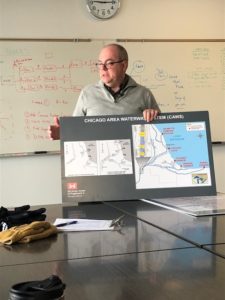
Chuck Shea, with the USACE, explains the 120-year history of the canal and its charge from Congress to stop the spread of AIS through the canal — a charge that came in 1996. Image by Moira Harrington.
Last Friday, I went to the Chicago Sanitary and Ship Canal, which is outfitted with a set of thrumming electrical barriers. These barriers churn out an alternating current 34 times per second, each with a duration of 2.3 milliseconds. The goal is to turn back any invasive Asian carp set on making the journey into the world’s largest freshwater system. If established, it’s theorized the voracious eaters would decimate food sources at the expense of larger native fish.
I went with Bonnie Willison, Sea Grant’s digital storyteller, and Sydney Widell, an undergraduate with our program. Fisheries Specialist Titus Seilheimer and Southeast Wisconsin Aquatic Invasive Species (AIS) Specialist Molly Bodde met us there, as did Chris Hamerla, a regional aquatic invasive species specialist with Golden Sands Resource and Conservation Development Council Inc., and Paul Skawinski, citizen lake monitoring network educator from the University of Wisconsin-Extension Lakes Program. Both are based in Stevens Point.
Willison and Widell are working on a multipart podcast series with a focus on AIS. Willison was tenacious in her efforts to secure permission from the U.S. Army Corps of Engineers (USACE) for our visit to Romeoville, Illinois. These are the folks who manage the site of what’s been called the world’s largest electric barrier, actually three of them with 155-foot sections of electrodes at the bottom of the 27-foot-deep canal.
A fourth barrier is under construction and will have three times the power of the existing ones. The USACE plans to throw the switch on that in early 2021.
This is ground zero in the battle to keep Asian carp from reaching the Great Lakes through a manmade waterway linking Lake Michigan to the Mississippi River Basin. It’s a 120-year-old unnatural connection, enabling marine transport and a cleaner Chicago, since stormwater and treated wastewater now flows out of that city thanks to an engineering feat that reversed the natural course of the water. It’s also provided a highway to mix species between the two aquatic systems that nature never intended to mix.
I’m not someone who geeks out on engineering, shipping or electricity. And it certainly wasn’t the promise of lovely waterside aesthetics that drew me south. This section of the canal is set amid a heavily industrialized stretch with belching petrochemical refineries.
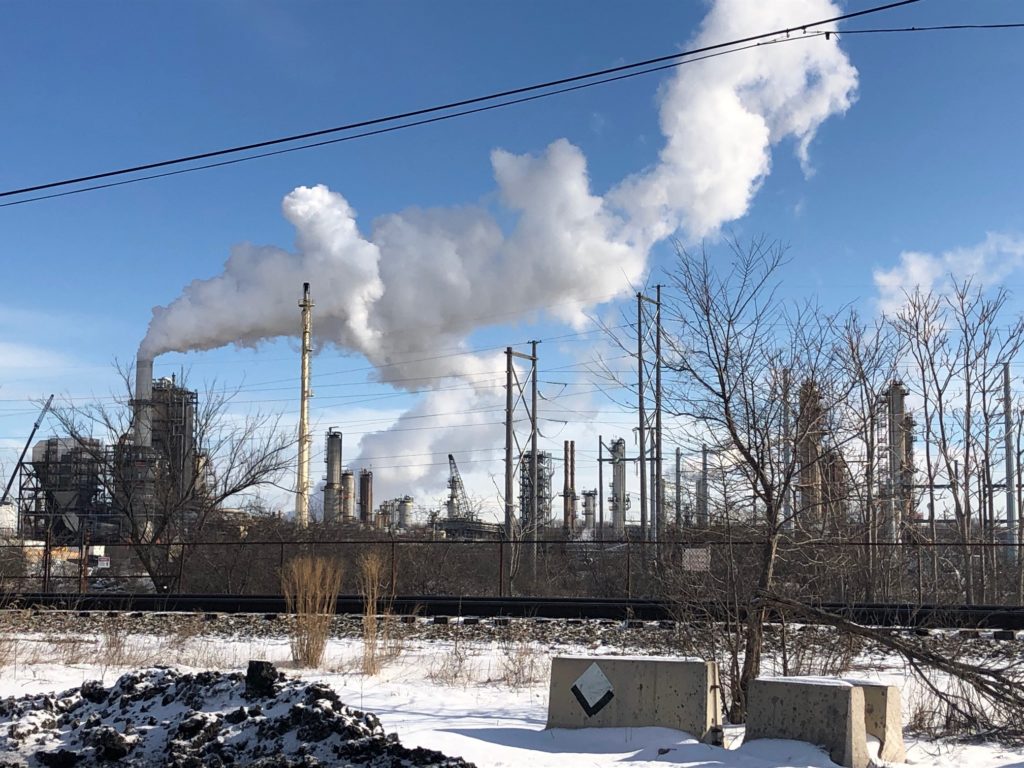
The area around the electrical barriers is heavily industrialized. Image by Moira Harrington.
No, my emotions got revving because of what this place represents. Eight USACE employees, some consultants with barrier manufacturer Smith-Root and a whole lot of electrical buzz are all that stands between the Illinois River’s Starved Rock Pool, which supposedly holds the planet’s largest concentration of Asian carp and is about 60 miles from where I visited, and the rippling waves of Lake Michigan. Wow!
I wasn’t the only one expressing emotions. Widell said she has “peaked” now that she’s had a visit. Our lead AIS Specialist Tim Campbell wasn’t able to make the trip but responded to Seilheimer, aka @DrFish on Twitter, with #jealous.
Hamerla told the story about how Skawinski had texted him earlier in the week: “Call me ASAP.” When the two connected and Skawinski extended the invitation, Hamerla’s response was reportedly an enthusiastic, “Heck, yea,” leading to a 4 a.m. departure from Stevens Point to meet at the appointed hour.
Strong feelings weren’t limited to our group. Chuck Shea, USACE barrier project manager, said what motivates him on a daily basis is, “Knowing that you’re working on something that benefits so many people.”
The podcast episode about Asian carp and the barrier will be released in spring or early summer. At that time and after listening, Willison and Widell are betting you’ll get some emotions going, too.
Blog – Wisconsin Sea Grant
https://www.seagrant.wisc.edu/blog/asian-carp-dispersal-barrier-elicits-emotions/

